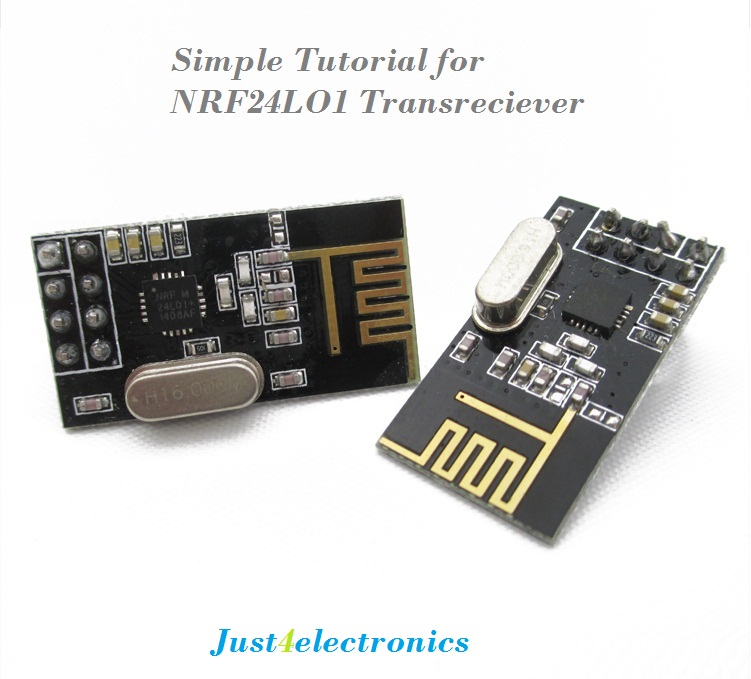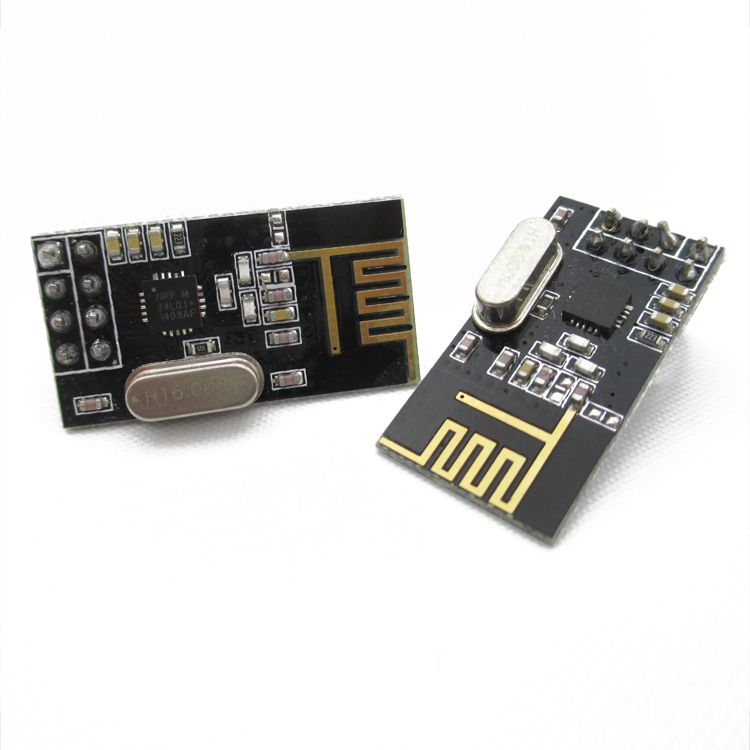Introduction about an article
Hello everyone this is my second post . After lots of surfing on GOOGLE when I won`t be able to find an easy and a simple tutorial or any testing method for NRF24L01 transceiver then I decided to publish a post on this. This is a simple short and easy tutorial for NRF24L01 Radio 2.4GHz Transmitter Receiver. In this tutorial I am going to control led using a pair of NRF24L01 transceiver and arduino .
Small Introduction About NRF 24L01 transceiver
The nRF24L01 is a highly integrated, ultra low power (ULP) 2Mbps RF transceiver IC for the 2.4GHz ISM (Industrial, Scientific and Medical) band. With peak RX/TX currents lower than 14mA, a sub μA power down mode, advanced power management, and a 1.9 to 3.6V supply range, the nRF24L01 provides a true ULP solution enabling months to years of battery lifetime when running on coin cells or AA/AAA batteries.
Material Required









- 2 PCS NRF24L01+2.4 GHz Wireless Transceiver module
- 2 Arduino any (I have used one arduino R3 & nano)
- Male to. femal jumpers
- LED
- Any Switch
- 10K resistor
Connections





- Connect the following pins to your Arduino:as shown in figure
- Pin 9 – CE
- Pin 10 – CS(N)
- Pin 11 – MOSI
- Pin 12 – MISO
- Pin 13 – SCK
- 3.3v – VCC
- GND – GND
- On the Receiver Pin 3 – LED
- On the Transmitter Pin 7 – Button
- Same connection for receiver and transmitter and you can use any arduino board .
Coding arduino
For coding arduino first we need some library files so follow the steps given below :
1. Download the ZIP file (library file zip folder download from HERE ).
3. Unpack the ZIP file.
4. Go to arduino library folder
5. And paste both the folders named ” nFR24L01″ and “RF24” into it.
Now, program the Arduino receiver and transmitter
Code for Receiver :
#include <SPI.h>
#include “nRF24L01.h”
#include “RF24.h”
int msg[1];
RF24 radio(9,10);
const uint64_t pipe = 0xE8E8F0F0E1LL;
int LED1 = 3;void setup(void){
Serial.begin(9600);
radio.begin();
radio.openReadingPipe(1,pipe);
radio.startListening();
pinMode(LED1, OUTPUT);}void loop(void){
if (radio.available()){
bool done = false;
while (!done){
done = radio.read(msg, 1);
Serial.println(msg[0]);
if (msg[0] == 111){delay(10);digitalWrite(LED1, HIGH);}
else {digitalWrite(LED1, LOW);}
delay(10);}}
else{Serial.println(“No radio available”);}}
Testing
This is a last step after completing the circuit and coding part we can easily test it by switching “ON” and “OFF”. .When switch is “ON” on transmitter side connected to pin 7 of arduino then led glows on receivers side connected to pin 3 of arduino .Video Shows the output of this project.

